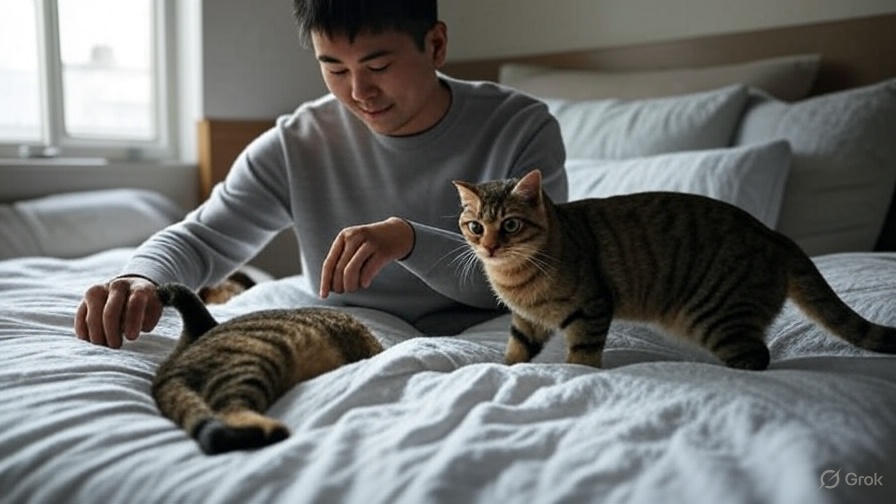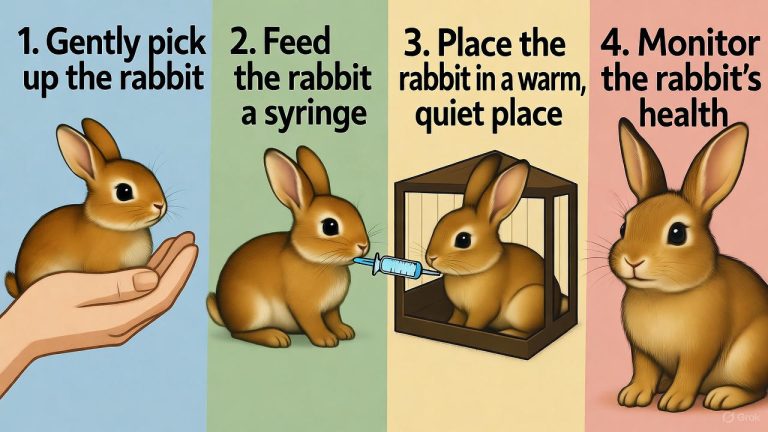How to Keep Your Cat Off Your Bed?
You love your feline friend, but you don’t love waking up with cat hair all over your sheets or finding your pet sprawled across your pillow at 3 AM. Many cat owners face this common challenge, and the good news is that you can train your cat to sleep elsewhere while maintaining a loving relationship.
Cats naturally seek warm, comfortable places to rest, and your bed offers the perfect combination of softness, warmth, and your familiar scent. However, keeping cats out of bedrooms becomes essential for various reasons, from allergies to sleep quality concerns.
Why Cats Love Your Bed So Much
Cats gravitate toward beds for several compelling reasons. Your mattress provides the ideal temperature for feline comfort, especially during colder months. The soft surface mimics the cozy feeling cats crave for quality sleep.
Your scent plays a huge role in attracting your cat to your sleeping space. Felines bond with their owners through scent recognition, and your bed carries the strongest concentration of your personal smell. This creates a sense of security and closeness for your pet.
Height also matters to cats. Elevated surfaces like beds give them a better vantage point to observe their surroundings, satisfying their natural instinct to monitor their territory. Beds offer the perfect combination of comfort and strategic positioning.
The texture of bedding appeals to cats’ tactile preferences. Soft blankets and sheets provide a pleasant surface for kneading, a behavior that brings comfort and reminds them of nursing as kittens.
Health and Sleep Quality Concerns
Sharing your bed with cats can impact your health and sleep patterns in several ways. Cat allergies affect millions of people, causing symptoms like sneezing, watery eyes, and congestion. These reactions intensify when allergens concentrate in your sleeping area.
Sleep disruption becomes a real issue when cats remain active during nighttime hours. Cats naturally follow crepuscular patterns, meaning they’re most active during dawn and dusk. This schedule often conflicts with human sleep cycles, leading to interrupted rest.
Hygiene concerns arise when outdoor cats bring dirt, bacteria, or parasites into your bed. Even indoor cats can transfer litter box particles or shed excessive fur on your clean bedding.
Some people experience anxiety or claustrophobia when sharing limited bed space with pets. Large cats can take up significant room, forcing you into uncomfortable sleeping positions that affect sleep quality.
Creating Alternative Comfortable Spaces
The key to success lies in providing attractive alternatives that rival your bed’s appeal. Start by setting up a dedicated cat bed in a location your pet already enjoys. Look for spots where your cat naturally gravitates, such as sunny windowsills or quiet corners.
Invest in high-quality cat bedding that matches the comfort level of your own bed. Memory foam cat beds, heated pet mats, or beds with raised edges that provide security work particularly well. The investment pays off when your cat consistently chooses their designated sleeping area.
Place the alternative sleeping space at an appropriate height. Cat trees with comfortable platforms, elevated pet beds, or even a designated blanket on a chair can satisfy your cat’s desire for height advantage.
Make the new sleeping area smell familiar by placing a piece of your recently worn clothing nearby. This provides the comforting scent connection your cat seeks without requiring access to your actual bed.
Rotate different types of bedding to maintain novelty and interest. Some cats prefer fleece textures, while others enjoy the feeling of terry cloth or cotton. Experiment with various materials to discover your cat’s preferences.
Physical Barriers and Deterrents
Sometimes direct intervention becomes necessary to break established habits. Closing your bedroom door represents the most straightforward approach, though it requires consistency from all household members.
Double-sided tape creates an effective deterrent without causing harm. Cats dislike the sticky sensation on their paws, and strategic placement along bed edges often discourages jumping attempts. Remove the tape gradually as new habits form.
Aluminum foil produces a similar effect through texture and sound. The crinkly noise and unfamiliar feeling under paws typically deter cats from lingering on treated surfaces. Replace foil regularly to maintain effectiveness.
Motion-activated air sprayers provide startling but harmless deterrence. These devices detect movement and release a quick puff of air, startling cats without causing injury. Position them strategically around bed perimeters for maximum effectiveness.
Scent deterrents work well for many cats. Citrus peels, commercial cat repellent sprays, or essential oils like eucalyptus can create invisible barriers. Test small areas first to ensure the scents don’t stain your bedding.
Training Techniques That Work
Consistent training produces the best long-term results for keeping cats off beds. Start by establishing clear boundaries and maintaining them religiously. Mixed messages confuse cats and slow the training process.
Positive reinforcement works better than punishment for most felines. Reward your cat with treats, praise, or play time when they choose their designated sleeping area instead of your bed. This creates positive associations with appropriate behavior.
Redirect rather than simply prohibit. When you find your cat on the bed, gently move them to their proper sleeping area and offer a small reward. This teaches them where they should go instead of just where they shouldn’t be.
Timing matters significantly in cat training. Address bed-jumping behavior immediately when you observe it. Delayed corrections lose their effectiveness because cats don’t connect the consequence with the original action.
Use verbal cues consistently. A firm “no” or “off” command, paired with gentle physical redirection, helps establish clear communication. Stick with the same words to avoid confusing your pet.

Addressing Nighttime Strategies
Nighttime presents unique challenges since you can’t actively supervise your cat’s behavior while sleeping. Preparation becomes crucial for maintaining boundaries during overnight hours.
Establish a bedtime routine that includes settling your cat in their designated area. This might involve interactive play sessions that tire them out, followed by feeding time and gentle guidance to their sleeping spot.
Consider using pet gates to restrict access to bedrooms while maintaining airflow and visibility. This works particularly well in homes where complete door closure isn’t practical or desired.
White noise machines can mask sounds that might attract your cat to your room during the night. The consistent background noise also helps both you and your pet sleep more soundly.
Ensure your cat has access to essentials throughout the night. Water, litter boxes, and comfort items should remain available in areas outside your bedroom to prevent middle-of-the-night disturbances.
Understanding Behavioral Patterns
Every cat develops unique habits and preferences that influence their sleeping choices. Observing your pet’s patterns helps you develop more effective strategies for redirecting their behavior.
Some cats seek beds primarily for warmth, making heated pet beds or warm locations more appealing alternatives. Others prioritize proximity to their owners, requiring alternative sleeping arrangements in nearby areas rather than distant rooms.
Stress or anxiety can drive bed-seeking behavior in some cats. Recent changes in household routines, new pets, or environmental disruptions might increase your cat’s desire for the security your bed provides. Address underlying stress factors alongside physical deterrents.
Age affects sleeping preferences significantly. Senior cats often seek softer surfaces to cushion aging joints, while young cats might prefer beds for play and exploration opportunities. Tailor your approach to your cat’s life stage and physical needs.
Common Mistakes to Avoid
Inconsistency represents the biggest obstacle to successful cat training. Family members must all follow the same rules, or your cat will continue testing boundaries and seeking the most permissive household member.
Delayed responses reduce training effectiveness. If you discover your cat on the bed hours later, don’t attempt correction at that point. Focus on prevention and immediate intervention instead.
Harsh punishments or startling techniques can damage your relationship with your cat and increase anxiety-related behaviors. Stick with gentle, humane methods that maintain trust while establishing boundaries.
Neglecting to provide adequate alternatives often leads to training failure. Your cat needs acceptable options that meet their comfort, security, and warmth requirements. Simply removing bed access without replacement rarely works long-term.
Giving up too quickly prevents habit formation. Most cats require several weeks of consistent training to establish new sleeping patterns. Patience and persistence produce better results than sporadic efforts.
Multi-Cat Household Considerations
Homes with multiple cats face additional complexity in managing sleeping arrangements. Cats often follow each other’s behavior patterns, making it easier for bed-avoidance habits to spread among pets or for one rebellious cat to undermine training efforts.
Provide multiple alternative sleeping areas to prevent competition and territorial disputes. Each cat should have access to their own comfortable space, reducing the likelihood that they’ll seek your bed as a solution to overcrowding.
Address dominant cat behaviors that might drive subordinate cats to seek refuge in your bed. Sometimes cats view your bed as neutral territory where they can escape social pressure from other household pets.
Train cats individually when possible, giving each pet focused attention and personalized strategies. What works for one cat might not suit another’s personality or preferences.
Long-term Success Maintenance
Establishing new habits requires ongoing reinforcement even after initial success. Cats can revert to old behaviors during times of stress, illness, or routine changes, making vigilance important for long-term results.
Regular evaluation of alternative sleeping areas ensures they remain appealing and functional. Wash pet bedding frequently, rotate toys and comfort items, and replace worn-out beds to maintain attractiveness.
Celebrate progress rather than focusing solely on setbacks. Acknowledge improvements in your cat’s behavior and continue reinforcing positive choices with rewards and attention.
Monitor your cat’s overall health and behavior patterns. Sudden changes in sleeping preferences might indicate medical issues that require veterinary attention rather than behavioral intervention.
Stay flexible and willing to adjust strategies as circumstances change. Moving households, adding new pets, or changes in family structure might require modifications to your approach.
Final Thoughts on Cat-Free Sleeping
Successfully keeping your cat off your bed requires patience, consistency, and genuine commitment to providing appealing alternatives. The effort invested in training pays dividends through improved sleep quality, reduced allergen exposure, and clearer household boundaries.
Remember that this process represents relationship management rather than punishment. Your goal involves redirecting natural behaviors toward appropriate outlets while maintaining the loving bond you share with your feline companion.
Start implementing these strategies gradually, focusing on one or two techniques initially rather than overwhelming yourself and your cat with too many changes simultaneously. Consistent application of proven methods produces reliable results for most cat-owner relationships.
With dedication and the right approach, you can enjoy peaceful, cat-free sleep while ensuring your beloved pet remains comfortable, secure, and happy in their own designated sleeping space.







